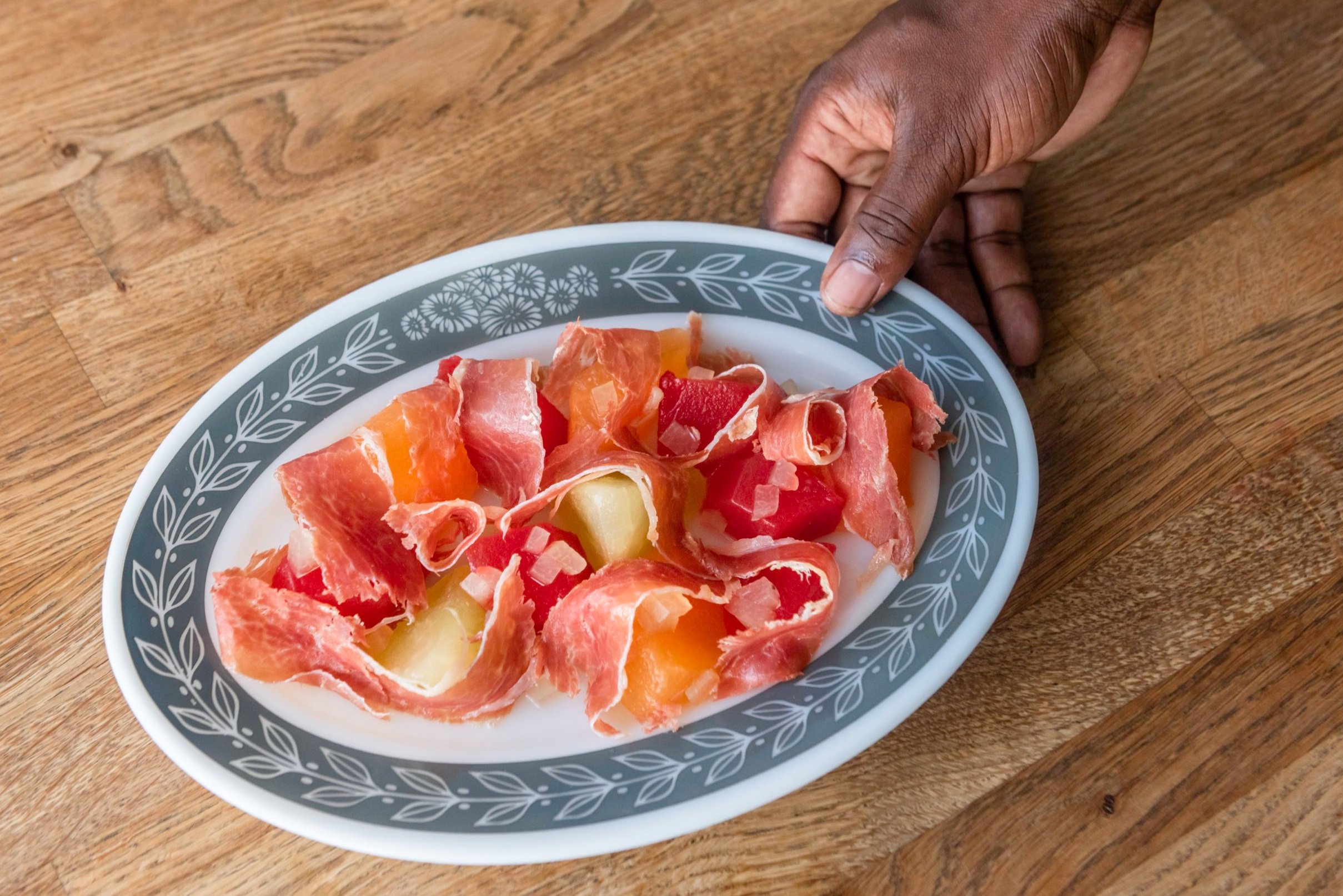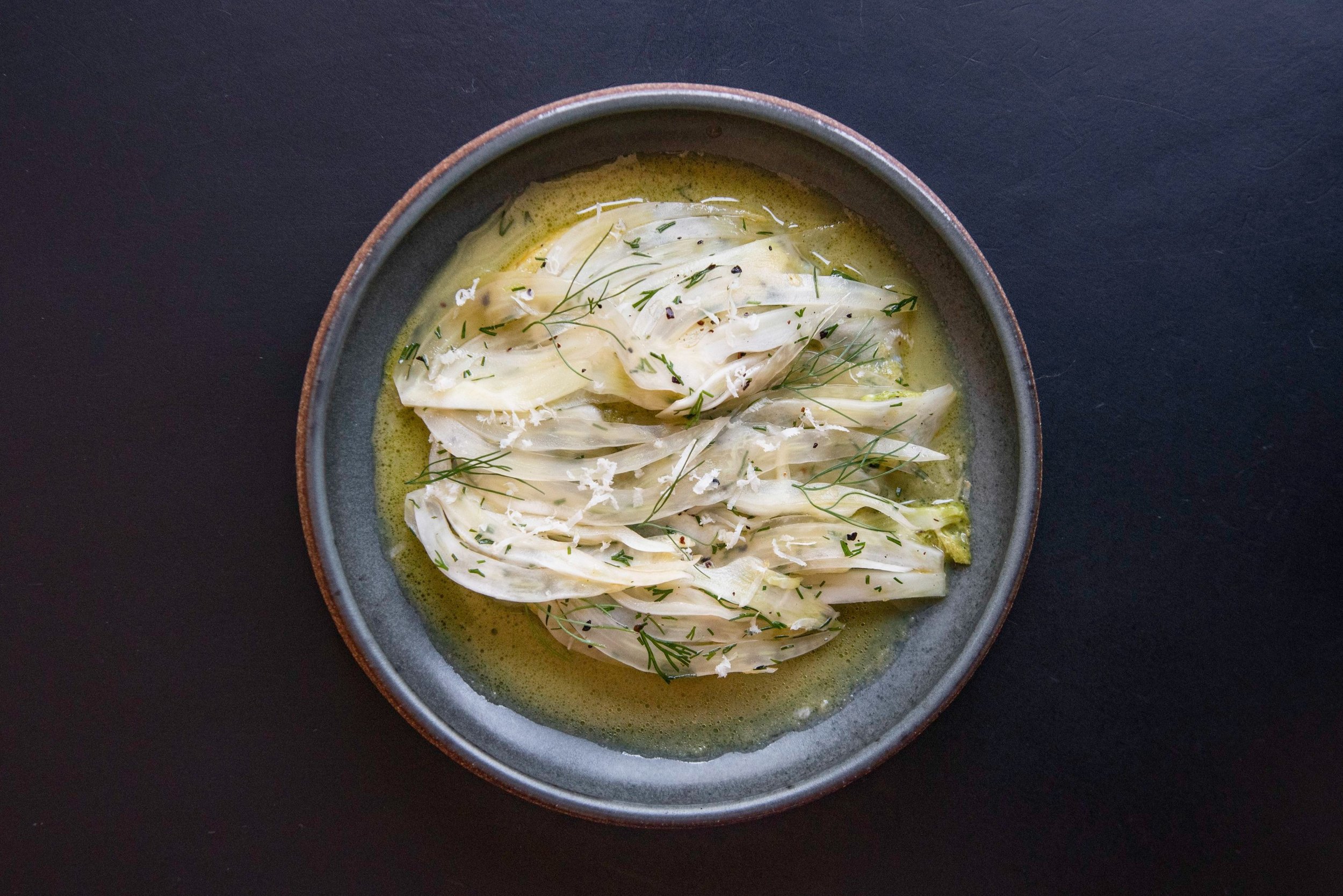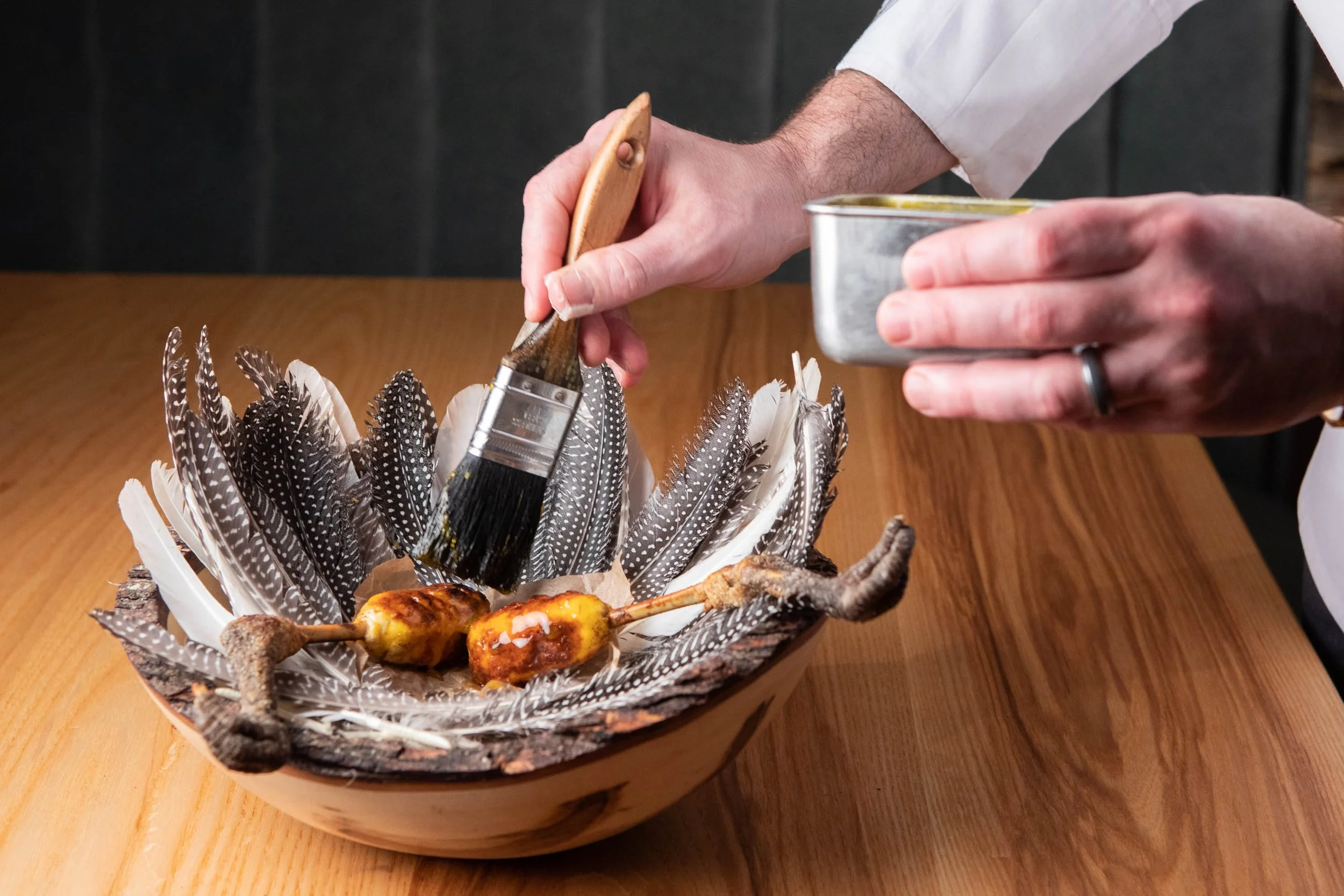Pyrex Hunter
At Burdell, Chef Geoff Davis evokes nostalgia through more than just his food.
Illustration: Bashel Lubarsky
At Burdell, Geoff Davis evokes a sense of nostalgia through his modern take on soul food. And while this sense of comfort and familiarity certainly shines through in his food, Davis takes it deeper, all the way down to the plateware that the dishes are served on.
At his forthcoming brick-and-mortar, Davis plans on using a majority of vintage plateware, focusing specifically on the patterned Pyrex that his grandmothers and aunts have in their homes. “I was first looking at some custom pottery, really trying to create that vintage feel, and then ended up doing some thrifting with my mom,” says Davis. “We stumbled across a lot of ‘Crazy Daisy’ patterned items. That’s the pattern that my mom grew up eating on—an early 1970s pattern that my grandmother Burdell had, and it kind of clicked. I want to serve food on these, and in order to tell the story, this is a big piece of it.”
chef geoff davis | PHOTOS: WILL BLUNT
Three Melons: Ocelot Watermelon, Arava Melon, Ambrosia Melon, Pickled Watermelon Rind, Allspice, Lady Edison Country Ham
Since then, Davis has been obsessively sourcing Pyrex. Thrifting, social media, and eBay have been helpful, but Davis has an ace up his sleeve. “I have a contact that sells Pyrex in the Midwest, so she’s been hunting stuff and finding lots for me.” After acquiring the plateware, Davis then has to figure out how to use them. Plating on these intricately patterned plates presents a welcome challenge—letting Davis’s ethos of contextualizing the history of Black food cultures within farming and preserving take center plate. “I really want to strip down the garnishes and let the ingredients speak for themselves,” says Davis. “[The patterns are] a gentle reminder of the family history that informs the dishes. I think if you’re plating on a beautiful white plate, it’s a blank canvas, but these have a border that gives some context for the nostalgic and vintage aspect of the restaurant.”
Floriani Corn Grits, Tomato and Shrimp Gravy, Creole Spices, Brown Butter, Uni, Scallion
Fried Rabbit, Rabbit Offal Confit Gravy, Spring Onion, Worcestershire, Sea Salt
While the designs are certainly eye-catching and compelling, for Davis, they also provide a sense of shared nostalgia with his customers. “[These plates] take you to this place,” says Davis. “A lot of people grew up eating on this stuff. So many people have made comments like ‘oh my aunt had those,’ or ‘those patterns are super cool because they did short runs and didn’t reproduce them.’ It’s a window into the time period where they made that pattern.”
At the end of the day, plates are made to serve a function. But for a concept with such a stated mission, evoking emotion and connection through more than just the food allows Davis’s customers to feel a relatability to what he’s trying to do.









